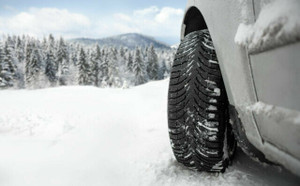The difference between AWD and 4WD and other drivetrain questions explained
By Kijiji Autos
luckybusiness - stock.adobe.com
If you have been shopping for a vehicle, you may have seen words like all-wheel drive (AWD), front-wheel drive (FWD). You may have asked yourself about the meaning of all-wheel drive. These terms all refer to the drivetrain.
Here is a breakdown on some of the drivetrain terms:
Front-wheel drive or FWD
The majority of vehicles are front-wheel drive, meaning that the engine’s power is routed to only the two front wheels. The reason most vehicles are front-wheel drive is because they are cheaper to manufacture. They are more space-efficient than a rear-wheel-drive system (RWD) because the engine, transmission and axles are close together in the engine compartment.
All-wheel drive or AWD
All-wheel drive powers both the front and rear wheels at once. There are AWD powertrains that power those wheels continuously, which are called full-time AWD, while another usually operates in two-wheel drive until more traction is needed then it switches to AWD. This is called part-time AWD, or automatic AWD.
Four-wheel drive or 4WD
People typically think of 4WD when they think of a drivetrain that routes power to all four wheels. That is because of the obvious examples of 4WD, which are mostly large trucks and SUVs.
4WD is engineered for very rugged off-road driving situations like climbing rocks or loose traction surfaces on hills or going through deep water. From these roots of heavy-duty off-roading comes 4WD vehicles that are now found in a variety of models that offer comfort and luxury.
The difference between AWD and 4WD
There is a difference between AWD and 4WD, though they are often used interchangeably in advertising and sales literature. Both of them are designed so that torque is sent to all four of a vehicle’s wheels to get better traction when needed. However, the 4WD vehicles tend to be tougher and able to handle more rugged terrain.
When it comes to the AWD vs 4WD debate, both provide more traction, which is welcome in places that have a lot of snow and ice, like Canada. But AWD and 4WD have different advantages depending on the situation.
AWD systems are a better option when there are changing conditions and a variety of road surfaces ranging from soft and hard-pack snow to glare ice. This is because power is delivered to all four wheels either all the time or activated automatically when needed, so changes can be dealt with as they come up.
4WD is what you would want if there is deeper snow or more extreme winter conditions. You would be able to be out on the roads before they are plowed, navigate icy hills and get yourself out of a snowbank.
Knowing about the different drivetrains will help you pick which one will best suit your needs and lifestyle. Find out more at Kijiji Autos.
Easily find your next ride on Kijiji Autos
Search now10 Most Popular Minivans in Canada for 2024
10 Most Popular Pickup Trucks in Canada for 2024
10 Most Popular Sedans in Canada for 2024
10 Most Popular Convertibles in Canada for 2024
10 Cheapest Electric Cars in Canada for 2024
10 Most Popular Hatchbacks in Canada for 2024
Can You Buy a Car With a Credit Card?
How to Buy a Car From a Private Seller
Should I Buy a New or Used Car?
When Is the Best Time to Buy a Car?









